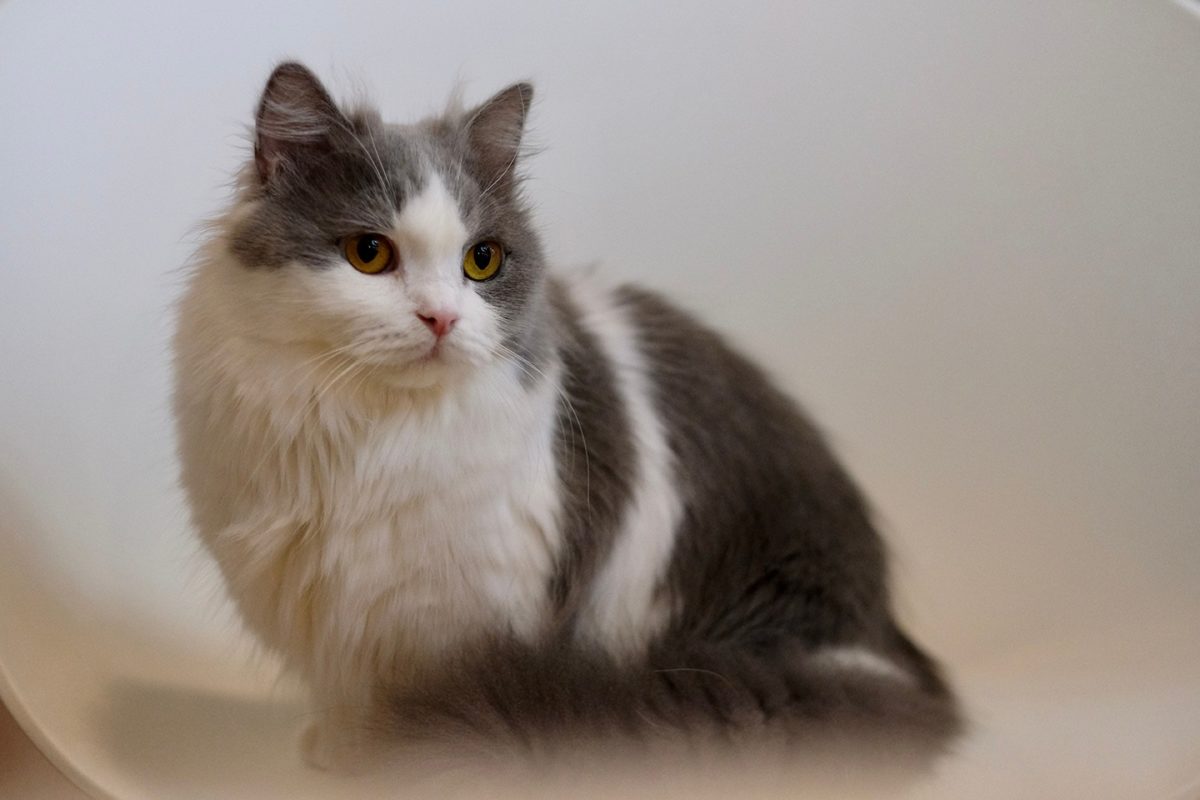Centuries ago Napoleon Bonaparte (also known as the “Little Corporal”) conquered empires, leaving an indelible mark on history’s pages. Today, the cat world has its own “Little Corporal,” the Napoleon Cat, conquering the hearts of many with its unique form and lovely demeanor.
The Napoleon is an exciting new breed of cat currently being registered with The International Cat Association (TICA), the world’s largest registry of purebred and household cats. The creation of the Napoleon began in 1996 with the goal of slow, steady, and healthy growth for the breed, ultimately achieving championship status in TICA, as well as other major cat registry organizations. We have been very pleased with the Napoleon cat’s rising popularity, its tremendous potential as a unique and loving companion in the home, not to mention a glamorous addition to the show ring. As one can see from the cats pictured here, the Napoleon cat remains truly irresistible from kitten-hood on.
Under TICA’s Rules of Registration, the Napoleon qualifies as a “Hybrid New Breed.” This is defined as “A breed developed from a deliberate cross between two existing breeds, incorporating characteristics of both parental breeds into the new breed.” The two breeds (or Groups) from which the Napoleon is derived consist of the Munchkin Group and the Persian Group.
From the Munchkin Group, the Napoleon has inherited its distinctively short legs. The short legs occurred as a spontaneous mutation in the general cat population and have been in common existence for many years. The short legs do not hinder the cat in any fashion; they run, jump, and play with the best of them! From its Persian Group (including Persians, Exotic Shorthairs and Himalayans) the Napoleon has inherited its lovely round face, eyes, and dense coat. From this group, the Napoleon has also acquired its substantial boning, a good support system for its uniquely short legs. It must be emphasized however that the Napoleon is not merely a “short legged Persian” or a “hairy Munchkin.” It is a unique combination of these two groups, making it easily distinguishable from any other breed of cat.
Whether you are considering bringing a Napoleon into your home as a loving companion and/or beginning a Napoleon breeding program, we invite you to read through all the information available on our site and online. There are many issues to consider before embarking on either endeavor. Cat ownership and/or breeding involve a great deal of responsibility and are something that should never be taken lightly.
Breeding the napoleon cat
We feel we must preface this section with a quote from Dr. Niels Pedersen, the author of the excellent book, Feline Husbandry. “The domestic cat is one of the most difficult animal species to propagate….” When raising cats properly, there is no great profit to be made, nor does it come easily. I would recommend anyone who has not bred cats before to research this thoroughly and to learn as much as possible before undertaking this difficult yet potentially very rewarding endeavor.
The goal of breeding Napoleons is to produce cats that conform as closely as possible to the “Standard” as set forth for the Napoleon. This Standard describes the “perfect” cat for its breed and can be seen here. Producing quality Napoleons that approach this “Standard” should be the goal of every Napoleon breeder.
Here are a few points regarding Napoleon breeding in particular:
At this point in its development, being a hybrid breed with allowable outcrosses to the Persian and Munchkin Groups, there are four ways that a Napoleon can be produced:
- Persian x Munchkin
- Persian x Napoleon
- Munchkin x Napoleon
- Napoleon x Napoleon
The Persian Group consists of all Persians, Exotic Shorthairs and Himalayans. The Munchkin Group consists of both long and short-haired Munchkins. In the years to come, when there is a sufficient Napoleon population to “close” the doors to the allowable outcrosses, we will only be doing Napoleon to Napoleon breedings.
Short legged Napoleons are called “standard,” and long legged Napoleons are called “nonstandard.” The terminology may seem a little confusing at first, especially with reference to the “Standard” of the breed as discussed above. The gene for producing short legged cats is dominant, however, all short legged cats will produce long legged offspring, and the long legged cats do not carry the gene for short legs. Therefore, it must be remembered that in any of the breeding combinations used to create a Napoleon, one of the parents must have short legs.
Regarding coat length, the brush (or short) coat is dominant, with the long coat being recessive. However, a brush coated cat can also carry the recessive for long hair. A brush coated cat can also be “homozygous” for short hair, which means that all of its offspring, even when bred to a long haired cat, will have short hair. Two long haired cats will only produce long haired kittens.
Along with proper facilities, the acquisition of appropriate and healthy foundation stock for a Napoleon breeding program cannot be over emphasized. Care must also be taken to initially set out a plan for color and coat type as well. A well-planned “blueprint” for a breeding program will invaluable, especially if put together before breeding animals are acquired.

